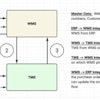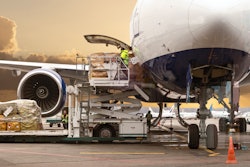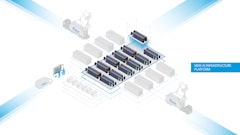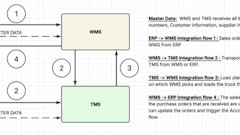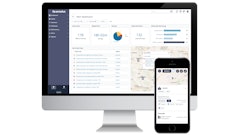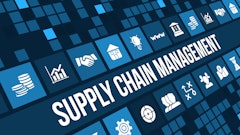
*This content is sponsored by SAP*
Averting Supply Chain Disruption and Other Black Swan Events
You don’t have to look too far back to see a string of unforeseen events that shook global supply chains to the core and changed how logistics is conducted. Call these disruptions “black swan” events. COVID. The Suez Canal blockage. The Canadian wildfires. These and many other local tornadoes, hurricanes, strikes, derailments, and other calamities can lock up the delivery of precious goods and supplies, leaving responsible brands tarnished and expectant customers moving on to the next best option.
What does it take to build a more resilient supply chain? How can you hedge against the unexpected and stay nimble when the black swan swoops?
Supply & Demand Chain Executive hosted a webinar on September 5, 2023, called “Unveiling the secrets of logistics visibility,” featuring Fabrizio Brasca, Chief Strategy Officer at FourKites, and Nicole Fox, Intelligent Spend and Business Network Executive at SAP. What follows is a brief recap of the discussion, with insights into how to prepare your logistics operation for the next unexpected disruption.
Q. How do you start building a more resilient supply chain?
A. Start with a thorough self-assessment, prioritizing your biggest challenges against a detailed map of your existing supply chain. Where do things get held up? How can you spread the flow of goods across your supply chain to absorb shocks? If one node breaks, can you support it with another node? Anticipate disruption. Then, look at where you want to be in the future. How can you best enable growth, and what emerging technologies will support that view? Determine metrics to track your progress and build a maturity plan to accomplish your goals. Remember, resiliency is all about staying agile and keeping the customer top of mind.
Q. What do you mean by visibility?
A. Visibility starts with data. With an abundance of data now at our fingertips, cloud computing, AI, and ML have become essential requirements for aggregating, sifting, sorting, and analyzing information quickly. These tools allow you to see what’s happening in your network across siloes. Traditional methods allow too much lag time. This is where SAP and FourKites add value. They bring data and participants together to make predictions and real-time decisions possible, so you can keep your operation on point and flowing, even in the face of disruption.
Q. How do I enable visibility across my supply chain?
A. With the advent of electronic logging devices, it became possible to track and trace carriers through digital means. FourKites leverages this data across all modes of transport – land, sea, and air. Their software considers weather events and other factors, such as traffic and transit times, and allows you to make accurate predictions on arrivals in real-time. As these events unfold, knowing what’s happening and why will enable you to communicate with customers, offering accurate updates that support customer satisfaction. It’s not just about connecting dots on a map. It’s about creating and applying insights to real-world use cases using all available data.
Q. What’s the best way to go from manual processes to fully automated?
A. Aim to manage by exception. When a disruption came up in the past, it could take two-to-four resources to stop everything and figure out a solution, and if no reasonable solutions were available, the effort turned into a complete waste of time.
A robust back-end system like SAP’s will help you crunch the numbers and shorten this process. A powerful front-end dashboard, such as FourKites’, can compile the information into a single screen for quick decisioning.
We’re in an age of customer-centricity, and it’s not slowing down. Competitors are rising up, and organizations that stagnate will be left behind. Putting solutions such as SAP and FourKites into place today will pay dividends now and in the future. You can’t afford to wait and see.
Q. How is track and trace different from visibility?
A. Most shippers offer a link showing where your package is in transit. But you need real-time updates that layer across the supply chain to derive complete visibility for resilience and agility, for example FourKites recently added a capability that reports ocean availability. The farther up the supply chain, you can see, the greater your ability to foresee problems and be proactive. This goes beyond just tracking the last mile.
The earlier you know something, the more time you have to adjust. If you have a secondary source of supply or more inventory at another location, you can move on it now before it affects the customer.
Q. Describe the benefits of digital transformation and how to acquire it.
A. The more modern supply chains stretch around the globe, the more likely they are to encounter disruptions. Technology is the great leveler. It can “see” into the farthest stretches of your supply chain so you can predict what will happen and meet each moment with the right response.
Start by addressing your most pressing issues as determined by your initial assessment. Break it down into chunks and build layer by layer. Take a single mode of transport, for instance. Then, expand in whatever way makes sense for your business.
Q. What can we expect going into 2024?
A. Logistics firms are focusing on new ways to operationalize visibility. Breaking down siloes, leveraging insights to proactively optimize the supply chain, and working with the data that’s immediately available is productive.
Examine where you’ve been working in the dark and shed light. Think beyond simple notifications. Anticipate and communicate using the technology that’s emerging now. Use the data to manage exceptions, but also to manage expectations. Consumer sentiment is only getting hotter, and those who respond sooner will benefit more.
Key issues include establishing basics, such as common sign-ons, ease of integration, and connecting partner systems and apps. The walls are coming down for transport, warehouse, and supply chain planning. Now is the time to act.
Connect with Supply & Demand Chain Executive to learn more.
Nobody covers the logistics industry as fully and in-depth as Supply & Demand Chain Executive. Sign up for our newsletter and stay on top of the latest industry trends today.




